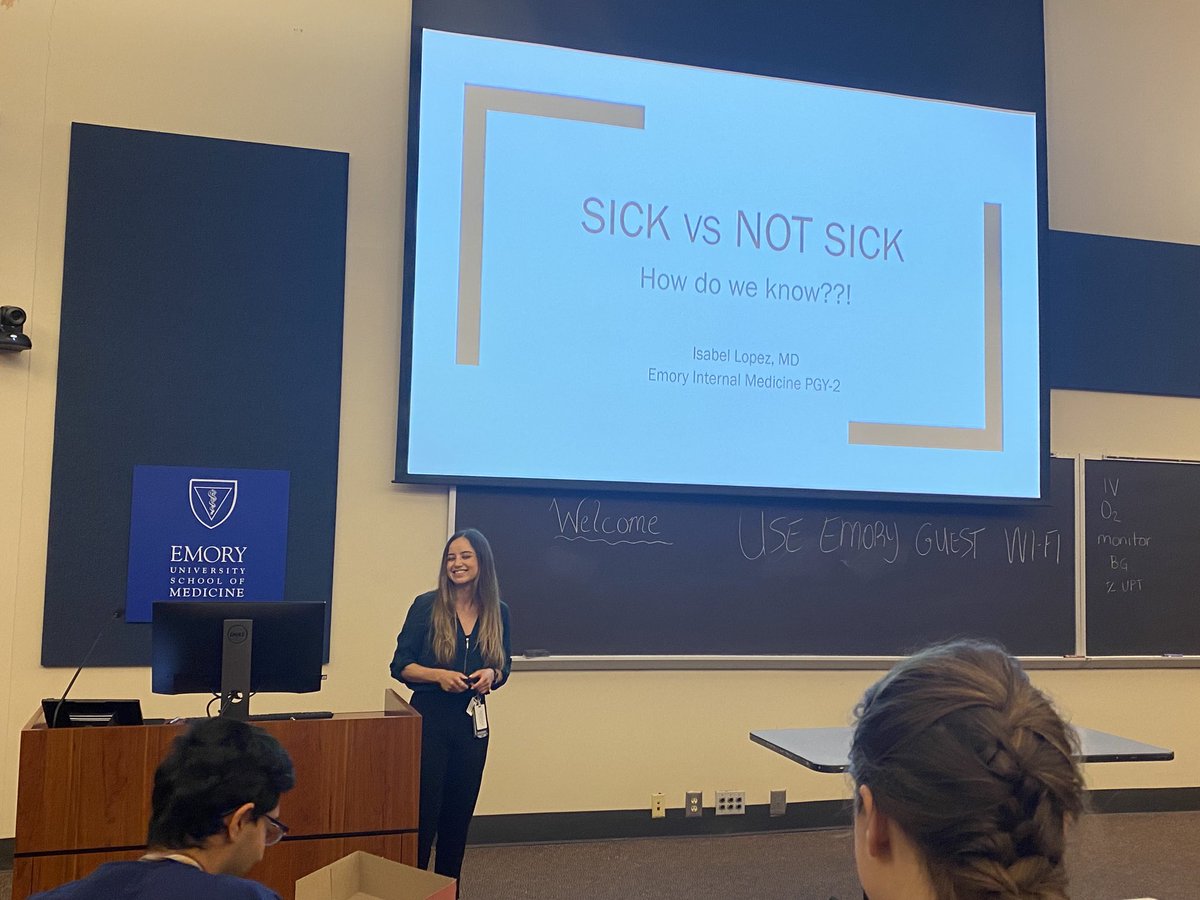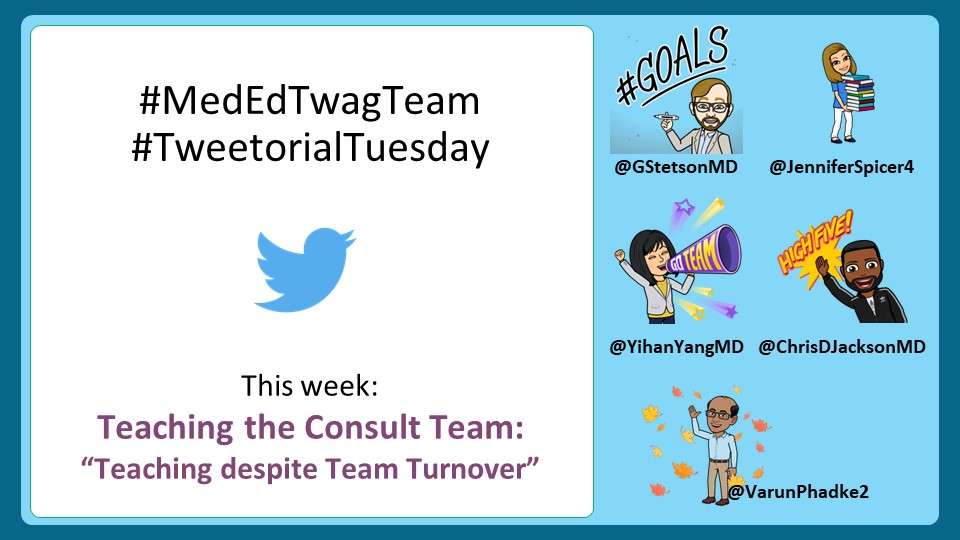1/ As a learner, why do some rotations have you looking forward to work but then others leave you counting down the days until it’s over?
And, as a team leader, how can you create an environment that results in the former?
This week: Rapport & Inclusion - the #MedEd foundation
And, as a team leader, how can you create an environment that results in the former?
This week: Rapport & Inclusion - the #MedEd foundation
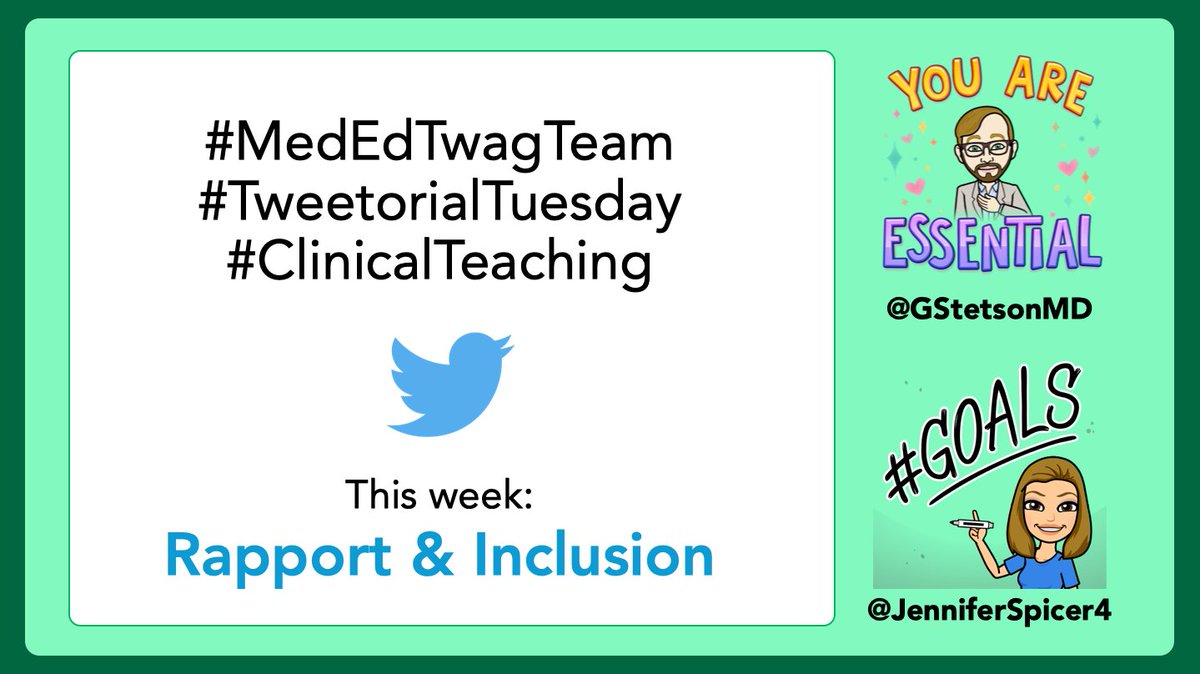
2/ The concepts of rapport & inclusion speak to the team environment that we build.
⭐️ Rapport = “bonding” or building positive relationships
⭐️ Inclusion = making everyone on the team feel valued
#MedTwitter
⭐️ Rapport = “bonding” or building positive relationships
⭐️ Inclusion = making everyone on the team feel valued
#MedTwitter

3/ Building rapport isn’t just about making our teams feel warm & fuzzy
Building rapport helps us understand each other so that we can communicate better.
And it’s not just the attending who builds rapport…everyone on the team has an impact!
Building rapport helps us understand each other so that we can communicate better.
And it’s not just the attending who builds rapport…everyone on the team has an impact!

4/ So what are some concrete ways to build rapport?
“Biography rounds” on Day #1
Daily culture question before rounds
Ask about lives outside of work
It’s about showing people we care about THEM and not just their work.
“Biography rounds” on Day #1
Daily culture question before rounds
Ask about lives outside of work
It’s about showing people we care about THEM and not just their work.

5/ First, Biography Rounds ➡️ What are they?
Ask learners about themselves:
Their backgrounds
Their interests (outside of work too!)
Their goals
Although I’ve never been on her team, I happen to know that @gradydoctor does this amazingly well.
Have questions/tips to add?
Ask learners about themselves:
Their backgrounds
Their interests (outside of work too!)
Their goals
Although I’ve never been on her team, I happen to know that @gradydoctor does this amazingly well.
Have questions/tips to add?

6/ Although the first day is busy, don’t be tempted to skip biography rounds.
It sets the tone for the month.
It makes learners feel seen.
AND, if that’s not enough, putting in the time up-front pays dividends for effective teamwork later on.
It sets the tone for the month.
It makes learners feel seen.
AND, if that’s not enough, putting in the time up-front pays dividends for effective teamwork later on.
7/ Next, the culture question
Before rounds each day, discuss something non-medical w/ learners before “getting down to business” such as one of the examples below.
These can be fun or serious.
@ricapitt is especially skilled at doing this on his wards teams.
Before rounds each day, discuss something non-medical w/ learners before “getting down to business” such as one of the examples below.
These can be fun or serious.
@ricapitt is especially skilled at doing this on his wards teams.

8/ Lastly, show interest in your learners’ lives.
What did they do on their day off?
How are they adjusting to [your city]?
What rotation did they finish or what rotation are they starting?
When learners know we care about them, they are more likely to respect & trust us.
What did they do on their day off?
How are they adjusting to [your city]?
What rotation did they finish or what rotation are they starting?
When learners know we care about them, they are more likely to respect & trust us.
9/ Alright, now let’s talk inclusion.
Disclaimer: This is not specifically about allyship/upstanding. That’s next week!
But this is about creating a sense of belonging.
For everyone on the team: from student to attending.
Disclaimer: This is not specifically about allyship/upstanding. That’s next week!
But this is about creating a sense of belonging.
For everyone on the team: from student to attending.
10/ There are many ways to foster a sense of belonging on the team.
Some aimed individuals:
Use names (pronounced correctly!)
Elicit learners’ goals
Some aimed at the team:
Provide choice in learning methods
Invite all team members’ input
Some aimed individuals:
Use names (pronounced correctly!)
Elicit learners’ goals
Some aimed at the team:
Provide choice in learning methods
Invite all team members’ input
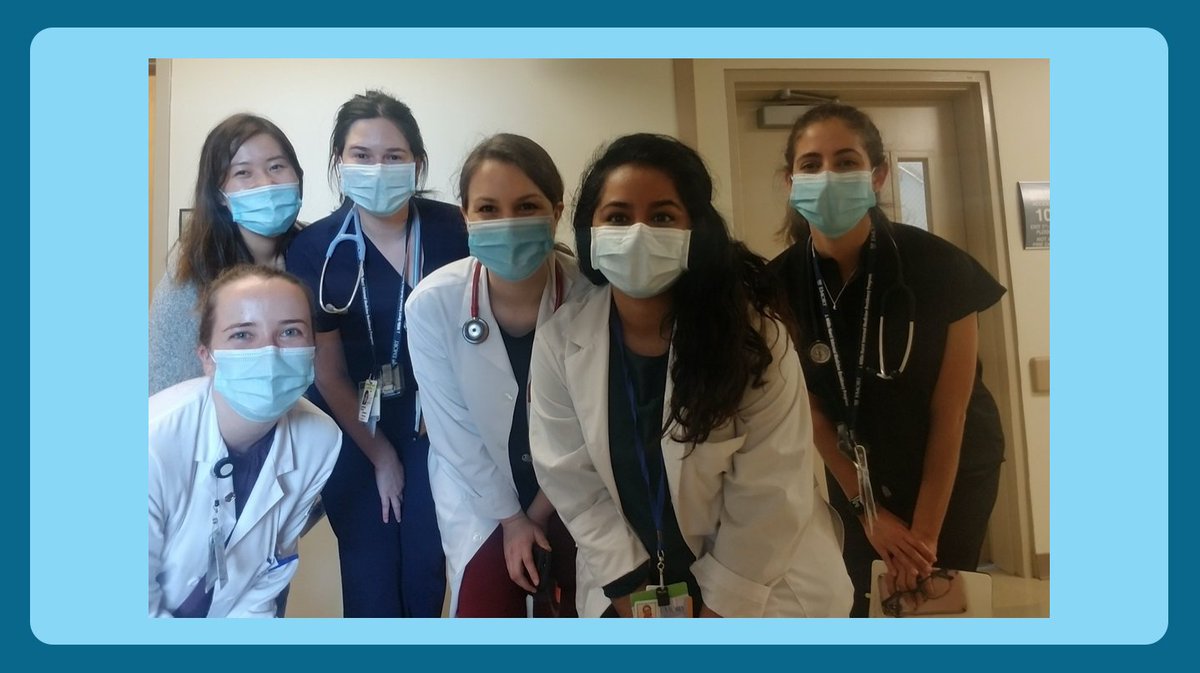
11/ The saying goes, “There is no sweeter sound than hearing one’s own name.”
Using learners' names may sound simple…
But….
Make sure you use the right name.
And pronounce it correctly.
See this great tweetorial from @gradydoctor on the topic
Using learners' names may sound simple…
But….
Make sure you use the right name.
And pronounce it correctly.
See this great tweetorial from @gradydoctor on the topic
https://twitter.com/gradydoctor/status/1277629881782865922
12/ Next, elicit learners’ goals at the start of a rotation.
What do they want to learn?
What do they want to work on improving?
Ask them to be as specific as possible.
Using a framework like the ACGME competencies can be helpful.
👉 And reference their goals during feedback!
What do they want to learn?
What do they want to work on improving?
Ask them to be as specific as possible.
Using a framework like the ACGME competencies can be helpful.
👉 And reference their goals during feedback!
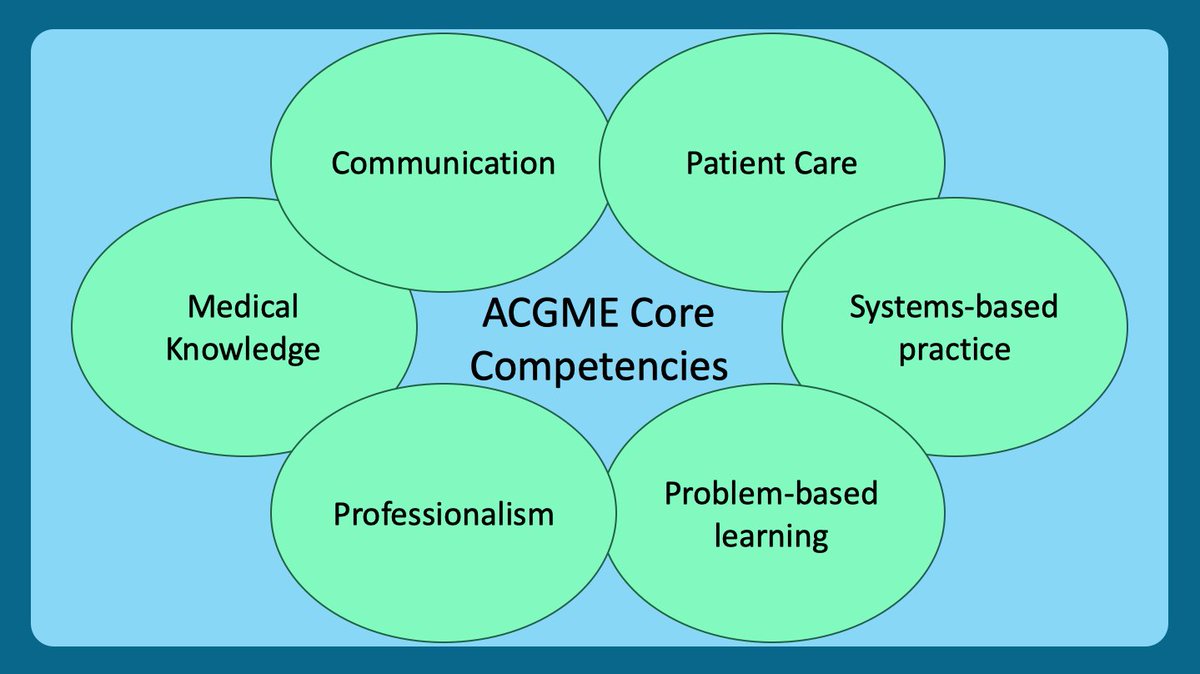
13/ For the team, provide choice for learning.
When & how will teaching happen?
Who will teach?
What topics?
Trainees want to learn. But they are busy.
Providing learners w/ choice increases the likelihood they will engage in learning rather than focusing on their "to do" list
When & how will teaching happen?
Who will teach?
What topics?
Trainees want to learn. But they are busy.
Providing learners w/ choice increases the likelihood they will engage in learning rather than focusing on their "to do" list
14/ And lastly, invite all team members’ input.
Here is the ratio of how much everyone should be talking:
1:1:1:1
Now, I have a confession: I am guilty of monopolizing the discussion as the attending.
But I’ve realized that the best discussions happen when I stop talking
Here is the ratio of how much everyone should be talking:
1:1:1:1
Now, I have a confession: I am guilty of monopolizing the discussion as the attending.
But I’ve realized that the best discussions happen when I stop talking
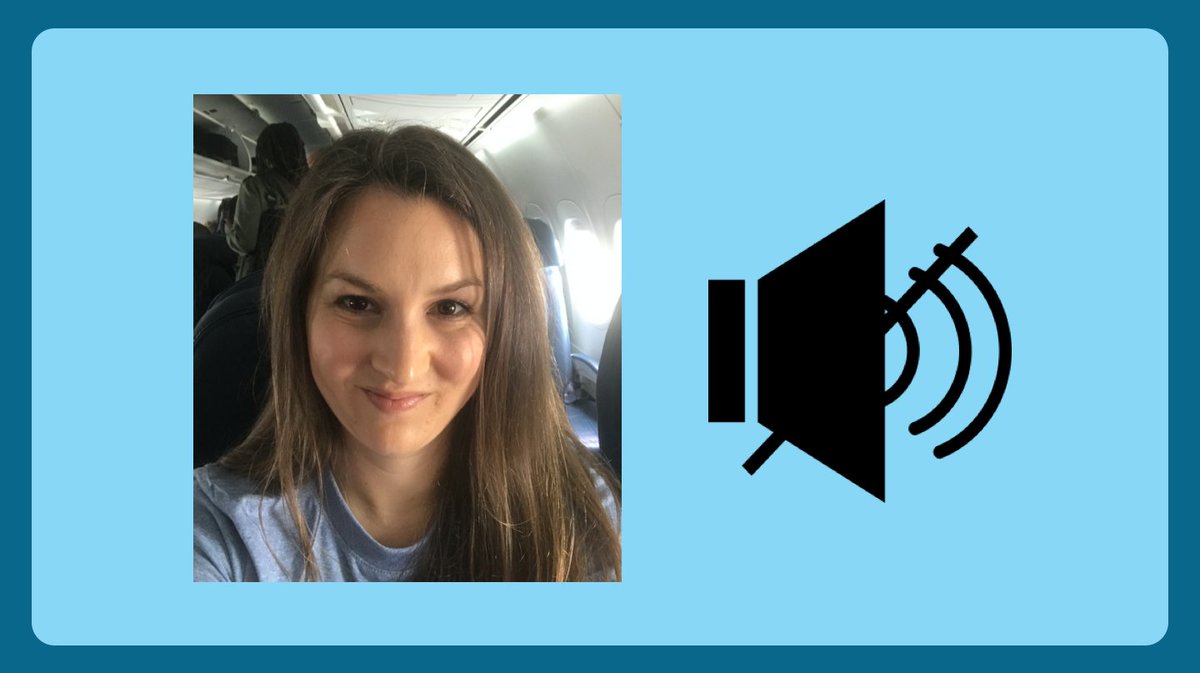
15/ Now, that doesn’t mean that the attending, fellow, senior resident, etc should never talk.
BUT inviting others to provide input first:
✅ Makes them feel valued
✅ Creates opportunities for learning
✅ Brings up things we may not have considered
And that makes a great team
BUT inviting others to provide input first:
✅ Makes them feel valued
✅ Creates opportunities for learning
✅ Brings up things we may not have considered
And that makes a great team

16/ So, in summary, to foster an awesome learning climate for your team:
Develop rapport:
Biography rounds
Culture questions
Discuss non-work stuff
Be inclusive:
Use names
Elicit goals
Provide choice
Invite input
Develop rapport:
Biography rounds
Culture questions
Discuss non-work stuff
Be inclusive:
Use names
Elicit goals
Provide choice
Invite input
17/ And keep an eye out for @GStetsonMD’s thread next Tuesday on Allyship/Upstanding.
And check out the @MedEdTwagTeam if you want to see all of our threads in one place!
Thanks for joining, and we will see you next week!
And check out the @MedEdTwagTeam if you want to see all of our threads in one place!
Thanks for joining, and we will see you next week!
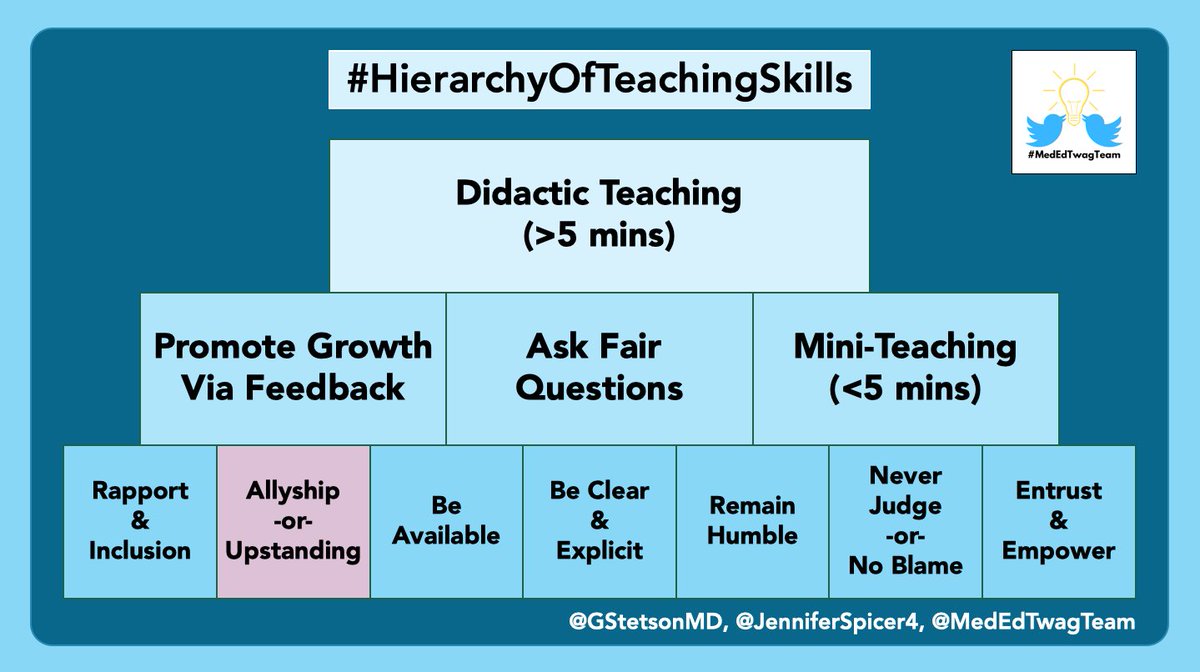
• • •
Missing some Tweet in this thread? You can try to
force a refresh


